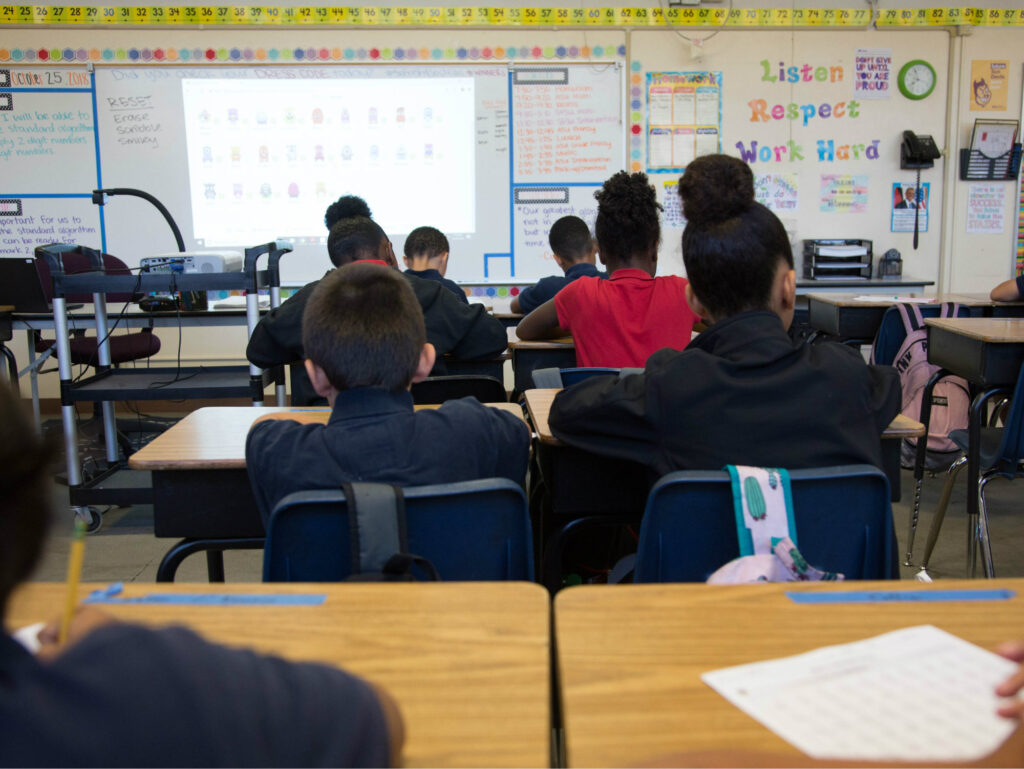Get information about registering to vote and voting by mail or in person with CapRadio’s 2024 Election Voter Guide.
It is important not to confuse state and municipal bonds. And this November, voters will decide on both.
This is due, in part, to Proposition 2, the State Educational Facilities Bond. If passed, it would provide $8.5 billion to TK-12 schools and $1.5 billion to community colleges for building maintenance, renovation, and construction. The state pays for a portion of these renovations, but each district must raise funds, most commonly through municipal bonds, to pay for the remaining construction projects.
Seven of Sacramento County’s 13 districts are asking voters to approve additional municipal bonds. (One school district, Folsom-Cordova Unified District, is seeking two separate municipal bonds, one for elementary schools and one for middle and high schools.)
What is a government bond?
General obligation bonds are a common way for both states and districts to finance long-term construction projects.
Proposition 13, passed in 1978, changed the nature of school funding. The new law capped the amount that property owners could be taxed. This, combined with current law that requires two-thirds of voters to approve local education bond measures, limits funding for school facilities. School districts had to rely on state education funds to finance new projects, and many school facilities fell into disrepair.
More than 20 years later, in 2000, California voters passed Proposition 39, which lowered the local school bond approval threshold to 55% and made it easier to pass bonds. Since then, voters have approved $181 billion in local bonds and $31.8 billion in state bonds for public school and community college facility projects.
If voters approve the state’s education bond measure, California will sell the bonds to investors. A portion of the debt is then set aside in the general fund to be repaid with interest to investors the following year.
If Prop. 2 (State Education Facility Bond) passes, taxpayers will not incur any additional costs.
What is a municipal bond?
A similar process occurs in California school districts when obtaining a bond. However, interest rate capped bond debt is paid off using property tax revenues from designated areas (rather than the state’s general fund).
Each bond taxes the property owner based on the assessed valuation of the property, rather than the market value of the property. Language such as “$35 per $100,000 of assessed value” means that district taxpayers would pay $350 if their property was assessed at $1 million.
Municipal bonds may be subject to increased taxes. For example, if a school district has never issued a school bond and the school bond is approved, the taxpayer will be subject to additional taxes. If a school bond already exists, the new measure could keep the tax rate the same, lower it, or increase it depending on the assessed value of the property. Changes in property valuation can also affect your tax liability.
If Prop. 2 is on the ballot, both the state and the district could share in the costs of construction and maintenance. If passed, local education bonds would be further strengthened by state education bonds, as 50 to 55 percent of new construction projects and 60 to 65 percent of renovation projects could be funded with state bonds.
Each district with an approved measure must have a Citizens Bond Oversight Committee comprised of local residents to oversee the use of the funds. Any district resident who holds a school bond can apply to serve on the oversight committee.
Local education measures listed on the ballot for facility upgrades may be used for “general school operating expenses, including administrator and teacher salaries and pensions, or for purposes or projects other than those specified in the measure.” You can’t.
You can read more about all eight TK-8 school board actions on the Sacramento County ballot here.
For more stories like this, follow us
Thanks to you, CapRadio provides a trusted news source. As a nonprofit organization, donations from people like you help sustain our journalism and help us discover the stories that matter to our viewers. If you believe in our work and support our mission, please donate today.
donate now
Source link



